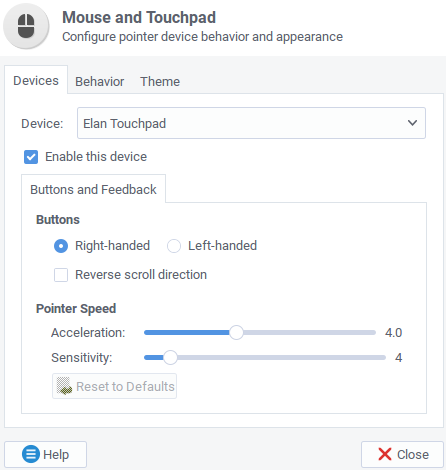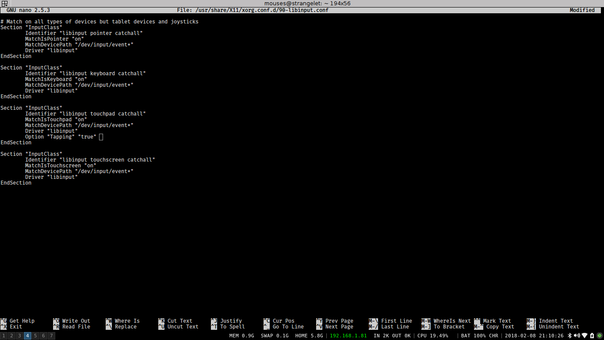Difference between revisions of "FAQ/Touchpad"
| Line 14: | Line 14: | ||
If your touchpad is Elan hardware, you will see it clearly. [https://wiki.galliumos.org/Elan_verify.png] | If your touchpad is Elan hardware, you will see it clearly. [https://wiki.galliumos.org/Elan_verify.png] | ||
| − | [[File:Elan_verify.png|centre|thumb|604x604px| | + | [[File:Elan_verify.png|centre|thumb|604x604px|This is an Elan touchpad!]] |
We will be making changes to the input system. It's advised that before you begin this process, you have a backup of anything critical - just in case. | We will be making changes to the input system. It's advised that before you begin this process, you have a backup of anything critical - just in case. | ||
Revision as of 04:42, 9 February 2018
Contents
Introduction
A common issue that presents itself to many GalliumOS users is the lack of palm detection as well as the lack of disabling the touch pad for a fraction of a second while the user is typing. If you have had frustration dealing with the touchpad in GalliumOS, there is a way to fix this and have something very close to stock ChromeOS behavior.
This guide will assume that your hardware is equipped with an 'Elan' touchpad. Nearly all Chromebooks use this hardware.
Before you start
Verify your hardware is using an Elan touchpad. Open up a terminal, and issue the following command:
xfce4-mouse-settings
If your touchpad is Elan hardware, you will see it clearly. [1]
We will be making changes to the input system. It's advised that before you begin this process, you have a backup of anything critical - just in case.
Required Software
To start off, we are going to need to install libinput. Open up a terminal, and issue the following command:
sudo apt install xserver-xorg-input-libinput
This will install libinput on your system, and configure it with the default settings.
Your output will look something like this: [2]
If you choose to reboot or restart your xorg session at this point before configuration, do so at your own risk - I recommend that you follow along with this guide and configure the input before rebooting.
Enable 'Tapping'
This will set your touchpad to be what most users expect - a single 'tap' will be a 'left click', a 'tap with two fingers' will be a 'right click', and a 'tap with three fingers' will be a middle click.
We're going to open up a terminal, and issue the following command:
sudo nano /usr/share/X11/xorg.conf.d/90-libinput.conf
Your terminal will now be editing the configuration, and you will see something like this: [3]
Notice the 'third' entry. This is the entry that contains the line:
MatchIsTouchpad "on"
You will add the line: Option "Tapping" "true" to the entry. See above screencapture and double check everything.
Once you have added this line and double checked you have it in the right place: issue a control + x (hold down ctrl key and press x). You will be prompted to save the file, the 'Y' key will save the file.
Test our changes
Now that we have installed libinput and enabled proper tapping - this is a great time to reboot. Issue the following command in your terminal (or use the power key or any other method you prefer to reboot your machine)
sudo reboot
At this point, you may notice that the mouse cursor is 'faster' or 'slower' than you are used to; that's fine. We'll address this in the next section. For the moment, you should be able to move your cursor, issue a left click with a single tap, issue a right click with a two finger tap, and issue a middle click with a three finger tap.
To test this, open a web browser and search your favorite search engine for anything. In the results - a single tap should open a link, a double finger tap on the link should open the right click menu, and a triple finger tap on the link should open the link in a new tab.


